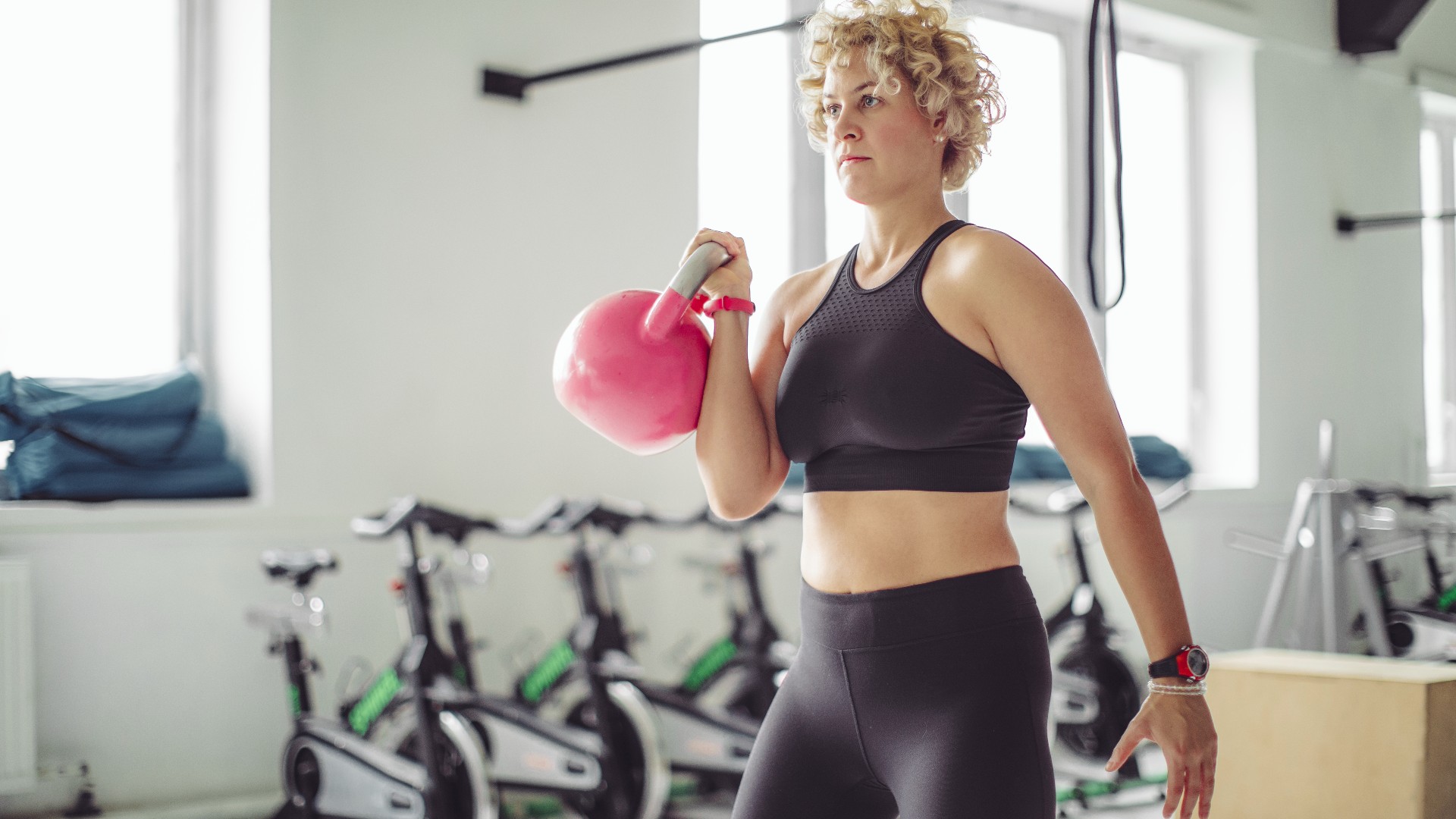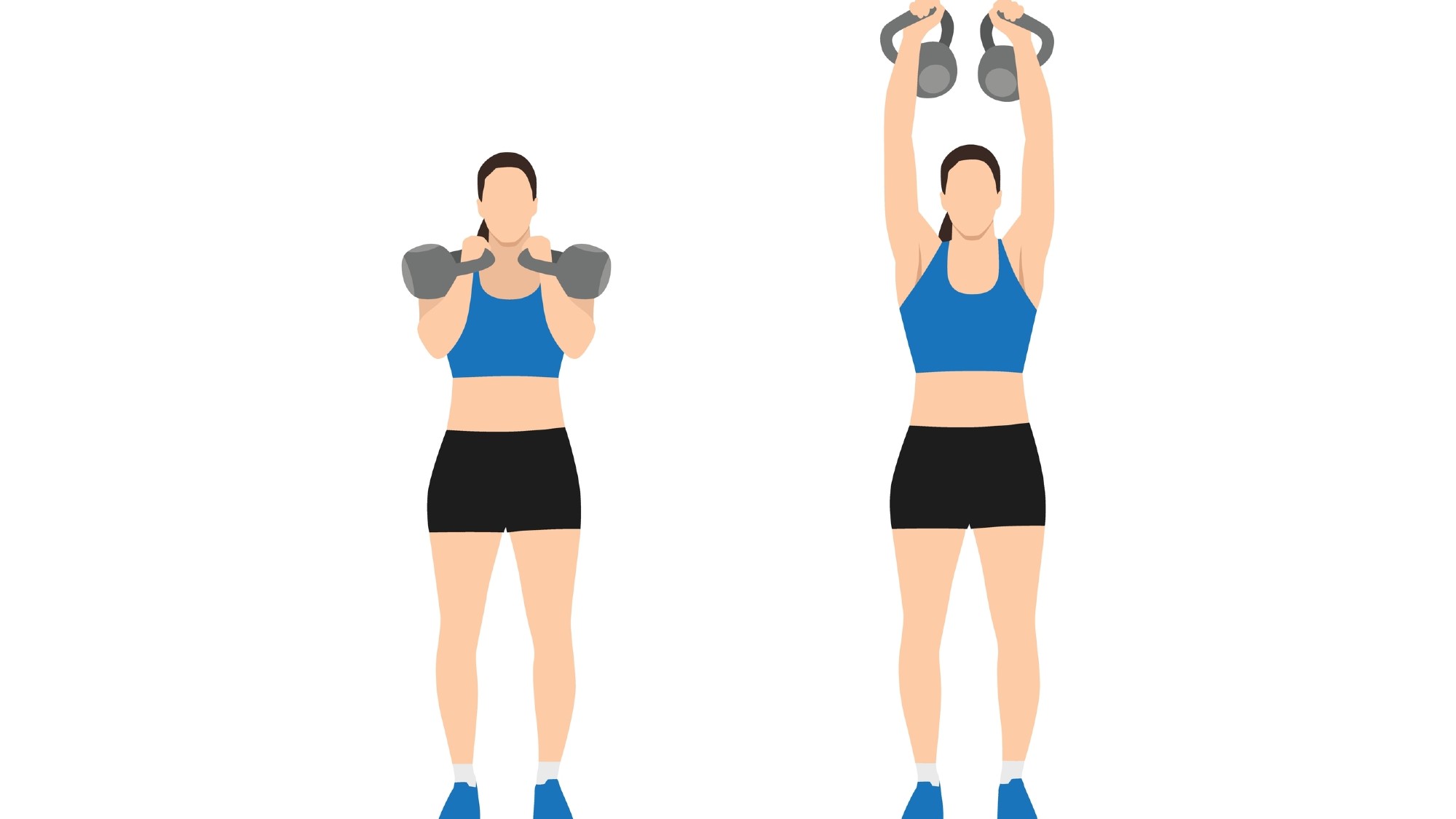
You don't always need to program staple compound exercises like push-ups or bench presses to supercharge upper-body strength programs. Sometimes, we prefer building the pecs, triceps and shoulders using a kettlebell complex and this three-move workout.
The full-body double-kettlebell complex is a Kettlebell Kings masterclass with a strong arm, shoulder and chest focus. You'll just need the best kettlebells for weightlifting, and if you're relatively new to working with kettlebells, we also recommend learning how to hold your kettlebell to maximize your power output during each upper-body exercise (and prevent nasty injuries).
Once you’re set, get started with this three-exercise chest and shoulder workout with kettlebells to sculpt stronger muscles and develop power and strength. It’s a muscle burner to contend with.
Kettlebells increase the range of motion available during exercises and allow you to find a flow state while you move, making them perfect for complexes.
Have you never heard of a complex before? A kettlebell complex just means building a series of exercises together into a sequence, like you'd find in a typical yoga class. Here’s one of our favorite barbell complexes to try if you don’t have kettlebells available.
Forget push-ups — what is the 3-move kettlebell chest and shoulder workout?
This upper-body kettlebell workout loads your deltoids (shoulders), triceps, biceps, pectorals, core, hips, back, glutes and legs, so a full-body torching is up for grabs.
Kettlebell training develops explosive strength, endurance and helps build muscle without heavily loaded barbells. Training this way also adopts unilateral training, which helps your body coordinate better and improves neuromuscular function as the mind-body connection improves.
Sign up to get the BEST of Tom's Guide direct to your inbox.
Get instant access to breaking news, the hottest reviews, great deals and helpful tips.
That means you don’t need much space to train your chest, arms and shoulders hard. But remember, you’re double-loading during this kettlebell workout, so opt for a slightly lighter weight than if you were single-loading, and make sure it’s still challenging.
Here’s how to do it.
EMOM 8
3 kettlebell swings
3 kettlebell cleans
3 kettlebell push press
The EMOM — which stands for every minute on the minute — is a classic way to punish your muscles quickly. Aim for eight rounds on the minute.
Perform three reps of kettlebell swings (here’s how to do kettlebell swings if you’re looking to level up your technique), three kettlebell cleans, then three push presses. You’ll need to lift heavy enough that this feels super challenging to complete, then rest until the next round.
If that doesn’t pack enough punch, aim to increase by one or two reps per round, or try several rounds within the minute, leaving yourself with 10-15 seconds rest before the next set.
1. Kettlebell swings
Swings require a hip hinge and a snap forward as you squeeze your glutes and drive the kettlebell upward. Control the upward and downward bell patterns by using your core to drive the movement, and try not to load the weight too much into your arms or back.
2. Kettlebell cleans

Learning the clean technique is a gateway to more technical lifts like the clean and press, clean and squat, snatches and more. It takes some time to develop, but our best tip is to rest the kettlebell toward your wrist or forearm and avoid slamming it against your arm. Keep the movement fluid, and remember to move immediately from the last clean into the first push press.
3. Kettlebell push press

Rack your kettlebells onto your shoulders and slightly lift your elbows. Adopt a double kettlebell front squat stance and position feet hip-width or shoulder-width apart. Engage your core and keep your chest proud, then bend your knees and lower into the squat position with a flat back. Pause at the bottom of the squat with thighs parallel to the floor, then drive up through your feet and extend the bells above your head into an overhead press position.
Bottom line
Keep your stomach braced and spine neutral throughout each exercise, and use the same weight for both kettlebells, even if you have a weaker side; this should help you level out any imbalances rather than play into the hands of your stronger muscles.
If you can’t lift on the weaker side the same weight as your dominant, then reduce weight.
All three chest and shoulder exercises force your muscles to work as a unit, building a robust engine all round. Increase the weight, reps or sets to suit your ability and remember that you’ll begin to fatigue as the sets go on, which means you’ll have less rest toward the end of the workout.
More from Tom's Guide

Sam Hopes is a level 3 qualified trainer, level 2 reiki practitioner and senior fitness writer at Tom's Guide. She is also currently undertaking her Yoga For Athletes training course. Sam has written for various fitness brands and websites over the years and has experience across brands at Future such as Live Science, Fit&Well, Coach, and T3.
Having worked with fitness studios like F45 and Virgin Active, Sam now primarily teaches outdoor bootcamps, bodyweight, calisthenics and kettlebells. She also coaches mobility and stretching-focused classes several times a week and believes that true strength comes from a holistic approach to training your body.
Sam has completed two mixed doubles Hyrox competitions in London and the Netherlands and finished her first doubles attempt in 1:11.
